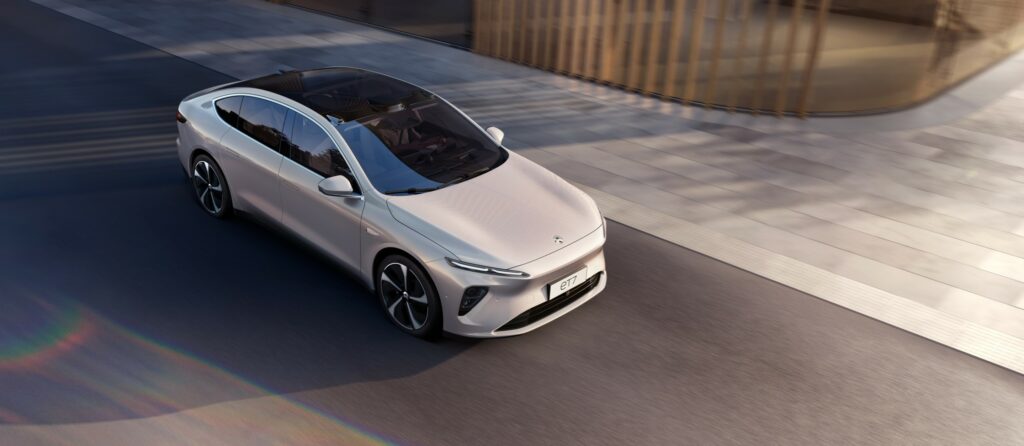Towards a 1000-mile range

(Courtesy of NIO)
One thousand miles is a nice, round number, and as a range for a battery EV it is a marketing department’s dream (writes Peter Donaldson). However, there is real value in such a long range if it can be achieved by a production roadcar in representative trim rather than niche vehicles and technology demonstrators.
Range is a key battleground for electric car makers as they compete to assuage potential customers’ range anxiety so that they can expand the market for battery EVs beyond major cities and conurbations into areas that are less well served by public charging infrastructure. Aptera for example boasts a range of 1000 miles for its battery/solar-powered two-seat three-wheeler, while Mercedes Benz touts 750 miles for its Vision EQXX technology demonstrator.
That figure of 1000 miles is a good benchmark not because many drivers will want to make such long journeys on routes with sparse charging infrastructure but because it provides a decent margin to compensate for the range-sapping assaults of real-world driving. So say Dr Peter Harrop, Dr Alex Holland and Dr Richard Collins of IdTechEx, which recently published a report on long-range EV efforts.
Such assaults include extremes of temperature that demand power from battery thermal management systems and cabin heating or air conditioning, battery age and charge/discharge cycle count and high-speed driving, each of which alone can reduce range by between 10% and 30%. ADAS and automation systems add weight and power consumption that can lower range by 10-20%, towing can cut it by 10-50%, while driving with all seats full and heavy freight on board can each impose a 10% range penalty, according to IDTechEx’s research.
With two or more of the above factors in play together, the reduction in range tends to be greater than the sum of its parts. There is a need therefore to roughly double the typical quoted range of a modern EV, and there are benefits to long range beyond assuaging range anxiety, which are connected with safety, money and the environment.
As with refuelling, stopping to charge has perceived personal safety implications, particularly at night. In terms of convenience, journey times are shorter without diversions to find chargers, queuing to use them, dealing with different payment procedures and time spent charging, for example.
Drivers can avoid a lot of these charger costs if they can charge at home or at their destination most of the time, and they can avoid battery replacement costs if capacity does not become an issue during their ownership. A vehicle with long range is also more useful for occasional or full use to generate ride-hailing income. These factors also contribute to higher resale value, IDTechEx argues, retaining as much as 60% rather than a mere 30% after 3 years.
There are also environmental benefits to be had from fewer battery replacements, such as making battery EVs practicable in remote regions and reducing the number of chargers that have to be built and maintained.
In a recent webinar, Dr Harrop emphasised the need for more effort on range in the short term – beyond improving batteries – commenting that there is much potential remaining for weight reduction, in regenerative braking systems incorporating supercapacitors and in advanced heat pumps.
Energy harvesting, he pointed out, is happening now with the likes of Hyundai and Tesla applying advanced, rugged photovoltaic technology, while other technologies such as thermo-electrics to recover waste heat, along with vibration and tyre flex harvesting, are languishing.
Most exciting, he said, is simplification. Tesla’s use of very large die castings reduce the number of parts in a car by about 370, while in-wheel motors promise to eliminate much of the drivetrain. Also, in-mould electronics can get rid of hundreds of parts at a time by printing devices as layers in plastic components that are then pressed into shape.
With short-range vehicles quickly becoming undesirable, the struggle for long range is still an existential one for vehicle manufacturers.
ONLINE PARTNERS































